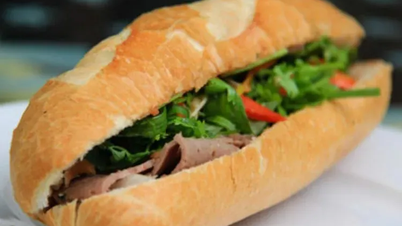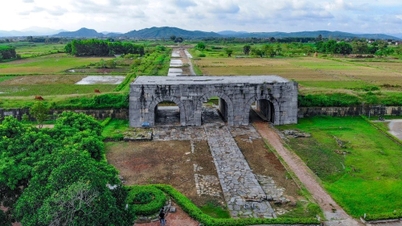Despite its significant benefits, the area of large-scale farming in the Mekong Delta has not expanded since 2020 and is even gradually shrinking. This situation is due to the lack of government mechanisms and policies to support capital investment; the failure of local Party committees, authorities, and cooperatives to mobilize many farmers to participate in large-scale production and to link farmers with businesses; and the weak and easily disrupted linkages between stakeholders in the production chain.
Many places are not yet capable of large-scale production.
Can Tho was one of the first localities in the Mekong Delta to implement large-scale rice production (LCM) models, with the area increasing year by year in the initial stages. However, in recent years, LCMs have not expanded. Currently, the province only maintains 136 LCMs with a total area of approximately 35,000 hectares (accounting for about 40% of the total sown area), mainly concentrated in Vinh Thanh, Co Do, and Thoi Lai districts. Not only have LCMs not expanded, but in many localities in the Mekong Delta, their area is gradually shrinking, or even being… “eliminated”. For example, in Thoi Binh district, which was a pioneer in LCM rice production in Ca Mau province in the early years of implementation, at one point, the total area of LCMs in the locality expanded to over 2,000 hectares, but now it has returned to zero (no more farmers or businesses participating in production).
According to Mr. Tran Thai Nghiem, Deputy Director of the Department of Agriculture and Rural Development of Can Tho City, there are many reasons, but the main one is that many communes and hamlets do not have cooperatives, have few cooperatives, or have cooperatives but they operate ineffectively due to a lack of resources (weak members' skills, lack of capital, etc.), and fail to mobilize and gather farmers to participate in large-scale production. Mr. Nghiem added: Of the 35,000 hectares of rice currently produced under the large-scale rice model in Can Tho, only about 15,000 hectares have stable production thanks to cooperatives. For the remaining area, production linkages between farmers and businesses often go through intermediaries. When rice prices fluctuate, these intermediaries inflate selling prices or reduce buying prices to gain more profit, easily causing the production chain to break down.
Loose link
According to Mr. Nguyen Hoang Bao, Vice Chairman of the People's Committee of Thoi Binh district (Ca Mau province), when participating in large-scale rice production, farmers and businesses enter into production-purchase contracts, but the content is mainly guidance-based, not economic contracts, and lacks strong legal standing. This lack of rigor leads to situations where, when rice prices rise, farmers break the agreement and sell to traders instead of businesses. Conversely, when rice prices fall sharply, businesses, seeing no profit, shirk their responsibilities in the cooperative, abandoning deposits and failing to purchase the farmers' output. Furthermore, when disputes arise, there is no specific legal framework to adequately address and resolve them. Gradually, farmers and businesses lose trust and stop participating in production under the large-scale rice production model.
According to a representative from the Thoi Binh District People's Committee, the unsustainable nature of production linkages in the value chain partly stems from the "transactional and seasonal" mindset of businesses. Specifically, during the winter-spring season (when rice quality is good), businesses rush to sign contracts with farmers, but when the summer-autumn season arrives (when rice quality is lower), the businesses... "abscond."
In fact, the production chain has been "broken" due to loose and weak linkages in many localities. For example, in Dong Thap, Mr. Nguyen Van Banh, head of the management group for plot number 10 (Binh Hang Trung commune, Cao Lanh district), said that he and many other farmers in his production group were recently cheated out of their contract by a rice company in An Giang, resulting in significant losses in the 2023 winter-spring rice crop. The contract stipulated that the participating company would purchase the entire rice yield from the 10,000-hectare area, buy it at market price at the end of the season, and provide an additional 200 VND/kg. The local government also committed to supporting 30% of the cost of fertilizer and pesticides.
“All production processes, from the rice variety sown (specifically Dai Thom 8), to the amount of pesticides and fertilizers used, were carried out as per the contract. However, at the end of the season, the company cited various objective reasons and refused to purchase the rice. To minimize losses, farmers had to sell their rice to traders at low prices,” Mr. Banh recounted. After the rice harvest, due to a loss of trust in the company, the local government also stopped providing the 30% subsidy for production materials, so farmers in this area returned to traditional farming methods.
Not only does the loose and weak link between farmers and businesses disrupt the production chain, but it also leads to heartbreaking situations, with farmers always being the ones who suffer the most. Recalling the 2013 winter-spring crop season in Tan Hung commune, Long Phu district, Soc Trang province, Mr. Phan Thanh Phuoc, Secretary of Tan Lich hamlet (Tan Hung commune), still felt disheartened: “In that rice crop, when a ‘rice broker’ – a reputable local resident – introduced a large-scale rice production and purchasing partnership, many local farmers enthusiastically participated. At the end of the season, after the farmers harvested, the traders came to weigh the rice and promised to pay the full amount a few days later, claiming they were waiting for their overseas rice import partners to provide matching funds. Trusting the ‘rice broker,’ the farmers gave them credit, but the traders… disappeared. Nearly 2 billion VND of the farmers’ money went down the drain. After that ‘scam,’ many farmers no longer had enough trust to participate in large-scale rice production when businesses approached them with production partnerships.”
Difficult to maintain and expand due to lack of capital.
According to the Department of Crop Production (Ministry of Agriculture and Rural Development), the government stipulates that rice is a conditional export industry, requiring businesses to have raw material areas, drying systems, temporary storage facilities, etc., before bidding to foreign markets for export. In reality, most businesses participating in large-scale production models have not yet met all the conditions due to a lack of investment capital. “Insufficient transportation, drying equipment, and storage facilities mean that harvested rice has to be gathered at the field for 4-5 days before being collected. Some rice fields are harvested 7-10 days after the harvest date, affecting both yield and quality,” a representative from the Department of Crop Production stated. To overcome this difficulty, many businesses need loans, but the government has not yet implemented preferential lending policies. Currently, banks only provide loans to rice businesses for normal rice exports, not for implementing production chain linkage models.
Statistics from several provinces in the Mekong Delta show that the success rate of contracts in large-scale production between farmers and businesses is only about 20%-30%.
Mr. Pham Thai Binh, General Director of Trung An High-Tech Agriculture Joint Stock Company, shared that in 2017, the company implemented a large-scale rice production project on an area of 800 hectares in Hon Dat district, Kien Giang province. “The project was approved by the Kien Giang Provincial People's Committee. All procedures and documents related to the project to secure credit were completed. However, when we approached many banks, they all rejected us. Not only this project, but to date, no large-scale rice production project of the company has received a loan from a bank, even though it met all the conditions.” According to Mr. Binh, this is the reason why the number of businesses participating in large-scale rice production in the Mekong Delta today can be counted on the fingers of one hand.
Mr. Nguyen Minh Tuan, Director of Hat Ngoc Viet Agricultural Co., Ltd., observed that the profits for businesses participating in the value chain model are very large. However, after more than a decade of implementing this model, the number of businesses is gradually dwindling. Those that remain are mainly large enterprises and corporations with sufficient economic resources, not needing to borrow from banks, or if they do, it's through collateralized loans with existing assets, but these are very few. "Although we would very much like to, we cannot establish production linkages, place orders, and guarantee product sales with farmers. Currently, the company only buys rice through traders, then processes it for export. This method makes it difficult to bring rice to demanding markets, and the profits are not high, but there is no other way, as the company lacks the capital to participate in value chain production," Mr. Tuan shared.
Area of the Large Field project over 12 years of implementation.
2011: over 7,800 hectares, 6,400 households (participating)
7-2014: 146,000ha
7-2015: 430,000ha
7-2016: 579,300 hectares, 620,000 households
7-2018: 380,000ha
7-2020: 271,000 hectares, 326,340 households
From 2021 to the present, it is estimated that there are still more than 100,000 hectares.
Compiled by: VAN PHUC; Graphics: QUANG SON
Source


![[Photo] Prime Minister Pham Minh Chinh presides over a meeting on private sector economic development.](/_next/image?url=https%3A%2F%2Fvphoto.vietnam.vn%2Fthumb%2F1200x675%2Fvietnam%2Fresource%2FIMAGE%2F2025%2F12%2F20%2F1766237501876_thiet-ke-chua-co-ten-40-png.webp&w=3840&q=75)
































































































Comment (0)